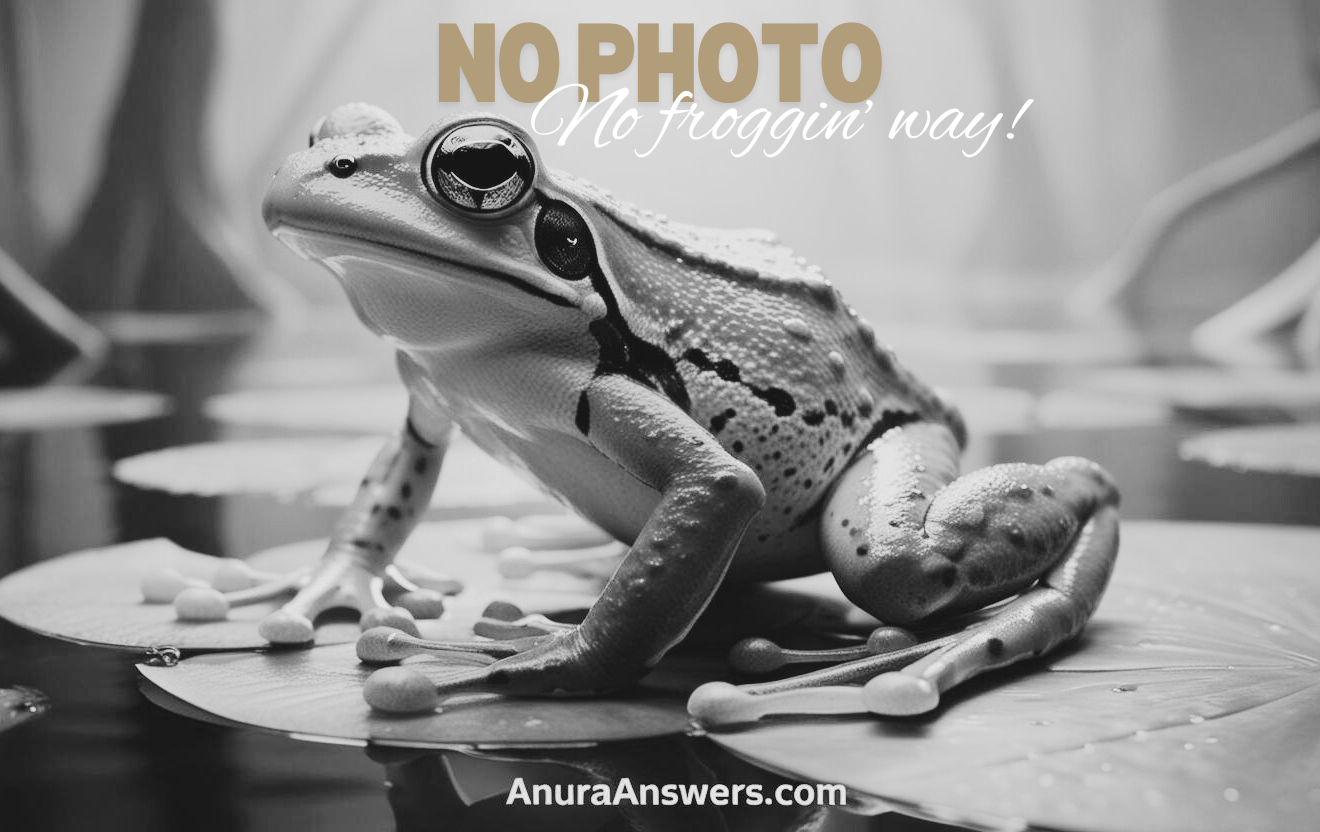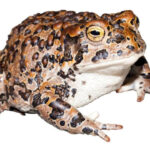Atelopus carauta: The Enigmatic Harlequin Toad of Brazil’s Atlantic Rainforest#
Along Brazil’s lush Atlantic rainforest slopes, hidden within mist-laden groves and babbling streams, a brilliantly adorned amphibian moves quietly — bold in its colors yet elusive in its ways. Meet Atelopus carauta, commonly known as the Rio de Janeiro Harlequin Toad, a charismatic frog cloaked in vivid patterns of yellow, orange, and striking black. Belonging to a genus famously symbolic of conservation crises in South America, Atelopus carauta quietly embodies both the fragile beauty and urgent conservation needs of its shrinking habitat.
This particular amphibian, reclusive and cryptically vibrant, captures the imagination of conservationists, scientists, and wildlife enthusiasts alike. Its very existence symbolizes resilience amid environmental upheaval, serving as a poignant reminder of the broader ecological threats that hide beneath tropical foliage. In a world of rapidly changing landscapes, this tiny creature beckons us to pause, observe, and understand the interconnected storytelling nature provides.
Taxonomy and Classification#
Atelopus carauta belongs to the family Bufonidae, often referred to colloquially as true toads. However, unlike the rugged and wart-covered creatures many associate with the name “toad,” Atelopus species, affectionately nicknamed harlequin toads, stun observers with their smooth, vividly patterned skin and elegant, slender limbs. Within the genus Atelopus, nearly a hundred different species have been documented, yet the harlequin toads share one critical unifying feature: a vulnerability to habitat change and disease.
Described initially in 1950 by Brazilian zoologist Antenor Leitão de Carvalho, Atelopus carauta quickly distinguished itself through its restricted range and exquisite skin patterns, bringing both scientific focus and conservation concern to this remarkable species.
Natural Habitat#
Holding steadfastly to patches of Brazil’s Atlantic rainforest biome, Atelopus carauta thrived historically along forested mountain slopes and crystal-clear streams near Rio de Janeiro and surrounding regions. These lush, moisture-saturated environments offer necessary humidity and temperatures integral to amphibian survival. The gentle flow of nearby waterways provides essential reproductive habitat, particularly during the breeding season when gravid females seek suitable waters to lay their eggs.
An Ecosystem Rich with Life#
Imagine standing amid a tangled tapestry of greenery, listening carefully to rustling leaves as delicate droplets drip rhythmically from broad ficus trees and moss-covered branches. It’s within this cool, shaded domain—crucial microhabitats ensuring consistent temperature and humidity—where Atelopus carauta thrives. Streams, rich in dissolved oxygen and vegetation cover, shelter vulnerable tadpoles from predators and intense sunlight. The frogs’ unique reliance upon these specialized habitats makes them adept indicators, signaling the condition and health of the surrounding environment.
Physical Characteristics#
One cannot help but be drawn to the remarkable visual identity of Atelopus carauta: its body, typically measuring between 25 to 40 millimeters long, displays intricate color patterns, which are both aesthetically mesmerizing and functionally significant. While coloration patterns may vary somewhat between individuals, shades of vibrant yellow and deep orange contrast sharply against stark black designs spanning their small bodies—a bright tapestry of nature’s creativity, easily distinguishing this species from others.
Adaptive Colors and Survival Tactics#
Such bold coloration functions critically as a warning to would-be predators, a phenomenon known amongst biologists as aposematism. The skin of Atelopus carauta, like many harlequin species, produces toxins aimed at deterring predators—giving these gentle amphibians protection without hiding in camouflage. This defensive strategy highlights one of evolution’s fascinating paradoxes: survival can sometimes be best achieved through conspicuous visibility rather than stealth.
Behavior and Life Cycle#
Atelopus carauta leads a life closely tied to rain patterns and freshwater availability. Typically diurnal, the species actively moves about in daylight, foraging for small invertebrates—primarily ants, beetles, and mites—along forest paths and leaf litter layers. Their precise movements, reminiscent of miniature, delicate dance routines, illuminate their careful selection of prey items.
Reproduction and Parental Strategies#
As breeding season arrives and the rains become frequent, male harlequin toads position themselves near running streams, singing melodically but softly, their vocal calls adding subtle notes to the ever-present orchestra of the rainforest. Attracted by the males’ delicate chorusing, females move toward the stream where mating rituals ensue. Eggs, once fertilized, are deposited in long, delicate strands, gently wound around submerged stones amidst flowing currents, ensuring an optimum oxygen-rich environment vital for delicate offspring survival.
From these transparent spheres emerge tiny, vulnerable tadpoles with streamlined forms perfectly suited for navigating swift freshwater habitats. These mobile larvae feed on algal growth on streambed surfaces, growing steadily until metamorphosis, when they emerge onto land gradually transforming their respiration and diet to terrestrial life.
Ecological Role#
Within the intricate and interconnected placental ecology of Brazil’s Atlantic rainforest, the humble yet vibrant Atelopus carauta serves as an invaluable ecological piece. As efficient insectivores, these amphibians contribute to regulating populations of several insect species, including ants and beetles, thereby influencing the wider health and balance of their forest home.
Indicators of Environmental Health#
Moreover, amphibians in general—and harlequin toads specifically—act as critical bio-indicator species. Their permeable skin, combined with the complexity of their lifecycle requiring both aquatic and terrestrial habitats, makes them uniquely vulnerable to pollution, chemical contamination, and climatic shifts. Scientists frequently evaluate populations of amphibians like Atelopus carauta to assess ecological integrity, identifying warning signs early enough to prompt conservation actions.
Threats and Conservation Status#
Regrettably, the spectacular and delicate Atelopus carauta faces severe existential threats, causing alarming population declines in recent decades. Habitat fragmentation and widespread deforestation of Brazil’s Atlantic Rainforest yet represent primary concerns. Urban expansion, agricultural encroachment, and extractive practices disrupt these sensitive rainforest ecosystems, disturbing waterways and impeding reproductive viability.
An Ominous Threat: Chytridiomycosis#
Beyond habitat destruction, one critical biological factor exacerbates the vulnerability of harlequin toads: the spread of chytrid fungus (Batrachochytrium dendrobatidis). Chytridiomycosis, caused by this fungal agent, dramatically impacts amphibians globally, devastating Harlequin populations across Central and South America. The high degree of susceptibility in Atelopus carauta underscores the urgency of specialized conservation measures and research efforts.
Currently recognized by the International Union for Conservation of Nature (IUCN) as Critically Endangered, focused conservation measures are underway involving captive breeding programs, habitat restoration, disease mitigation campaigns, and environmental education. Protecting upstream habitats of critical reproductive stream-sites represents a prioritized strategy helping safeguard this unique amphibian for generations to come.
Cultural and Scientific Significance#
Historically revered for their striking appearance and, in certain indigenous cultures, acknowledged due to perceived mystic properties, harlequin toads—including Atelopus carauta—hold cultural resonance. Today, amidst conservation efforts, the species’ plight symbolizes broader ecological messages concerning human actions and environmental stewardship responsibility.
Furthermore, scientific studies involving harlequin toad toxin properties have opened exciting biomedical opportunities. The diverse chemistries discovered within the skins of these animals hint at potential breakthroughs in pharmaceuticals, ranging from pain relief medication to novel antimicrobial treatments.
A Call for Continued Conservation#
Atelopus carauta, while small and often unseen, draws us deep into an essential dialogue about biodiversity, interconnected ecosystem dynamics, and the increasingly powerful role humans play in species survival. Its survival depends not just on scientific and conservation communities, but on collective awareness and action from all those enchanted by nature’s marvels.
Protecting a species as alluring, delicate, and irreplaceable as Atelopus carauta is a privilege and responsibility shared by us all—urging each of us toward commitment, fascination, and active stewardship for the biodiverse world we cherish.







